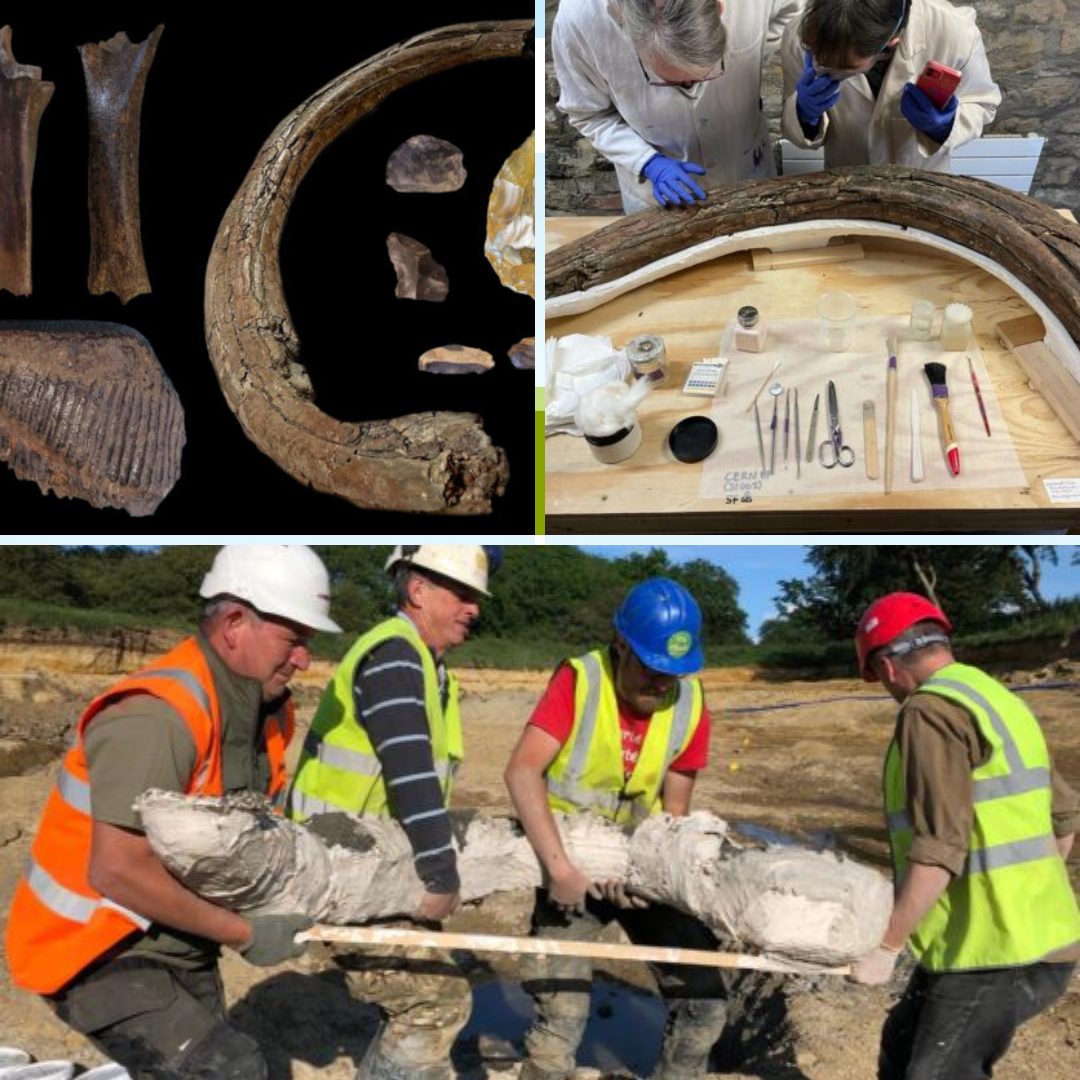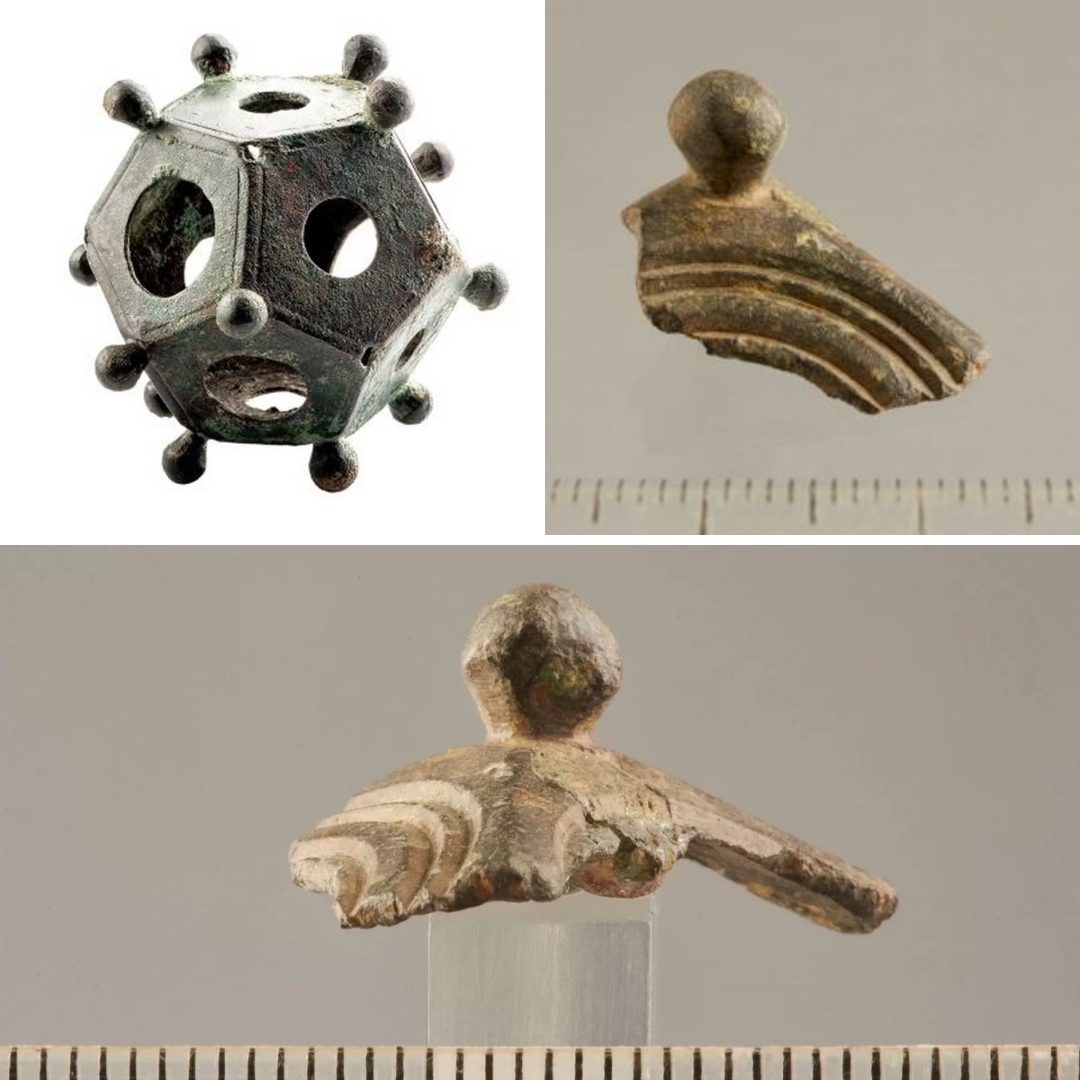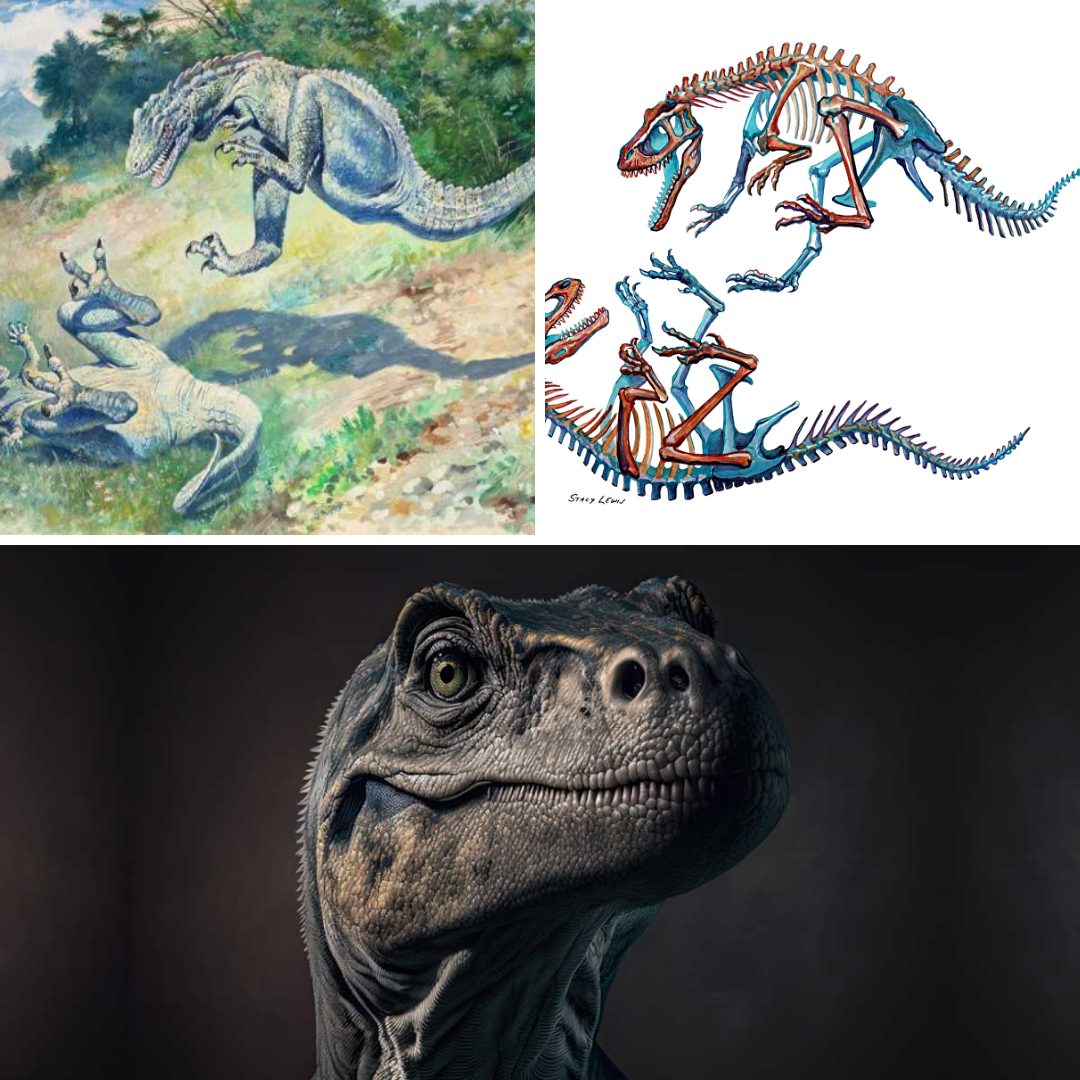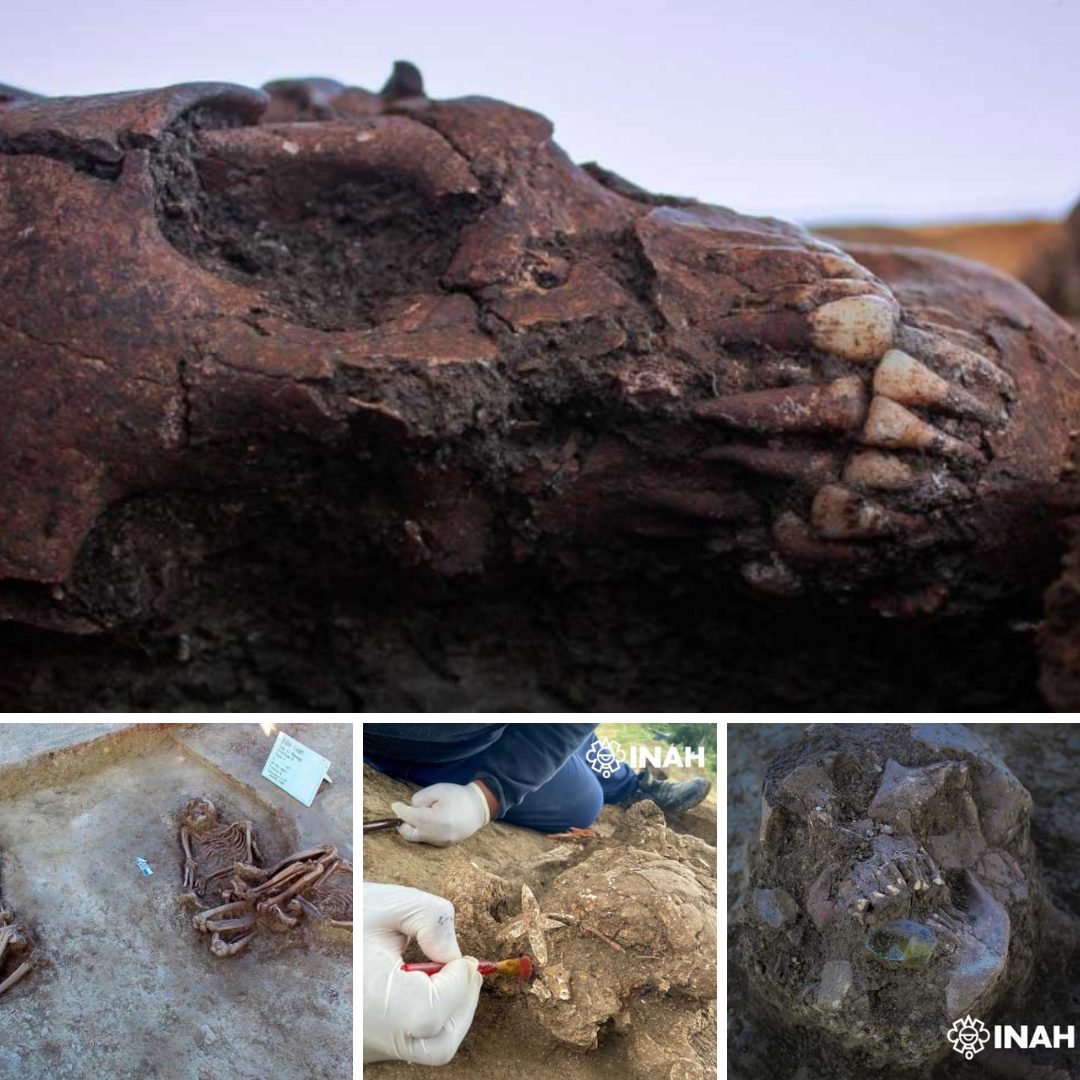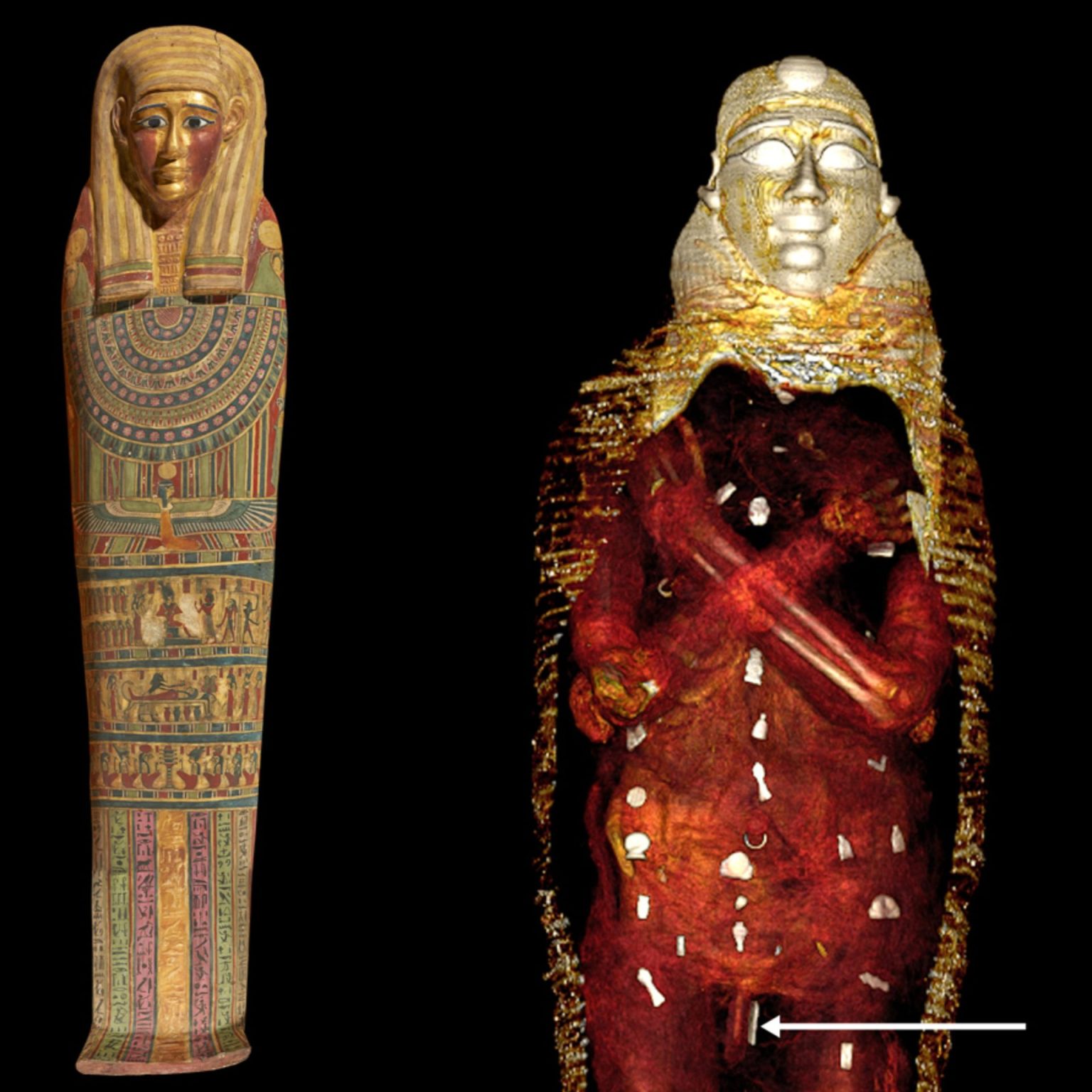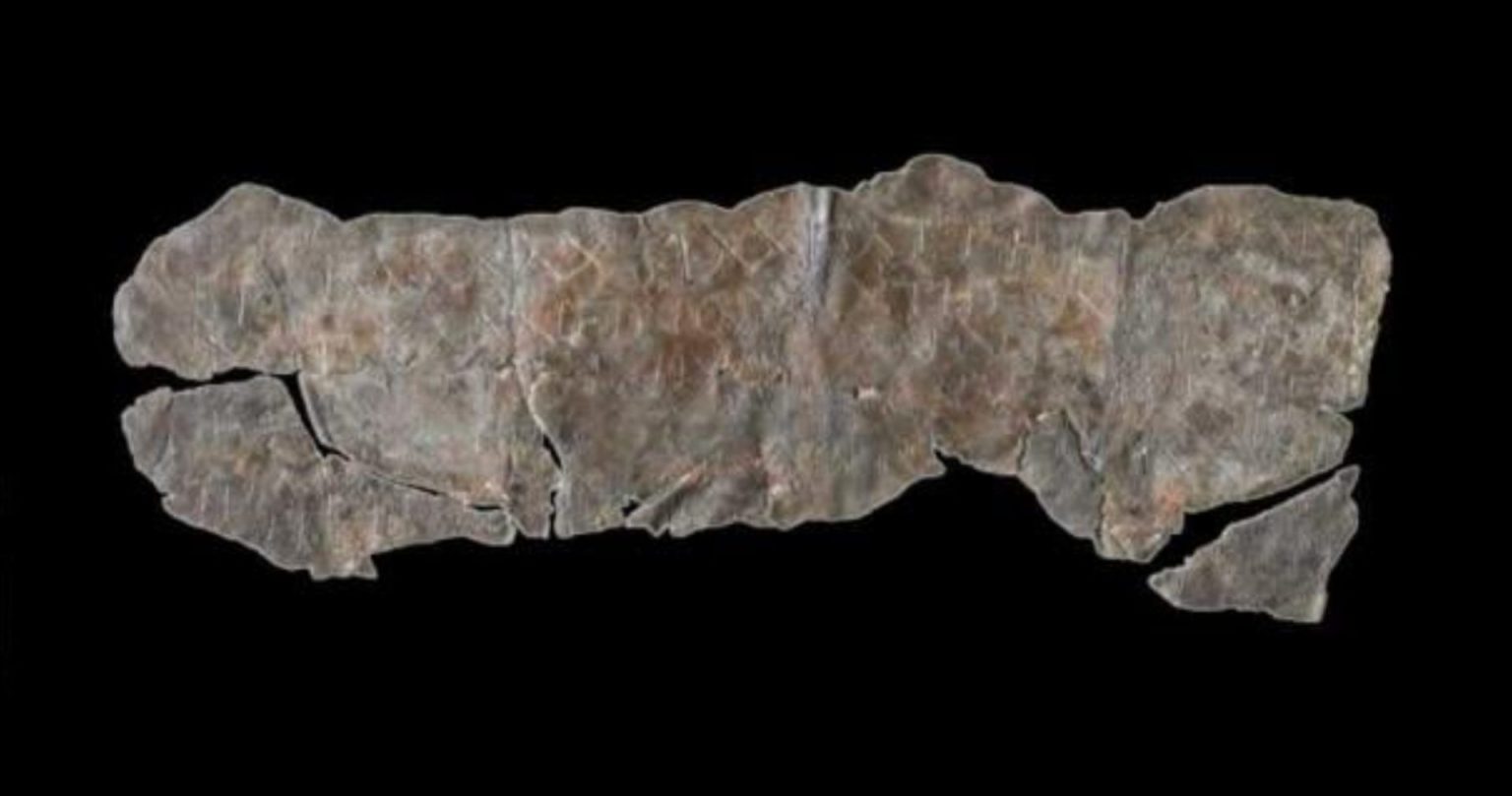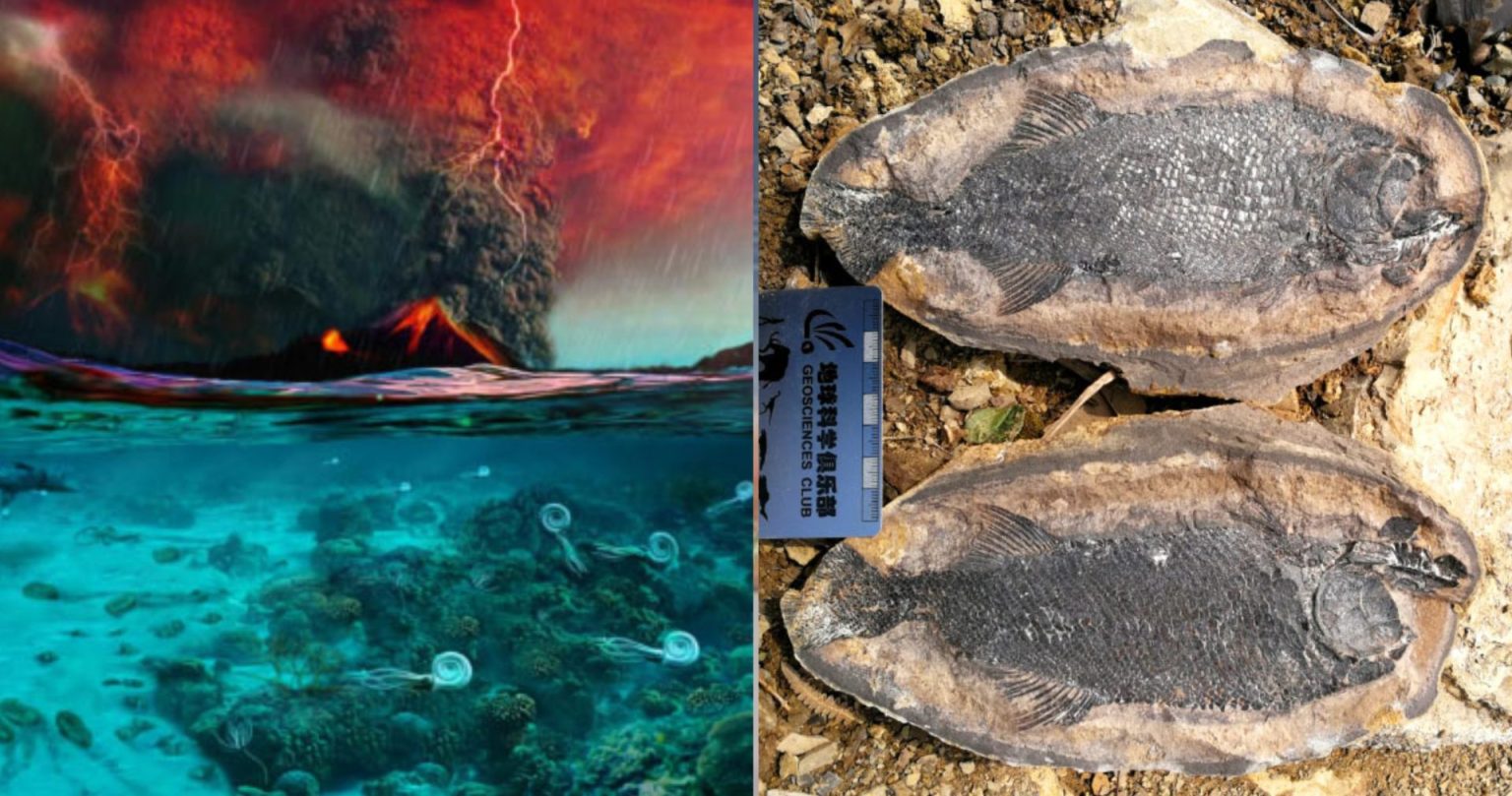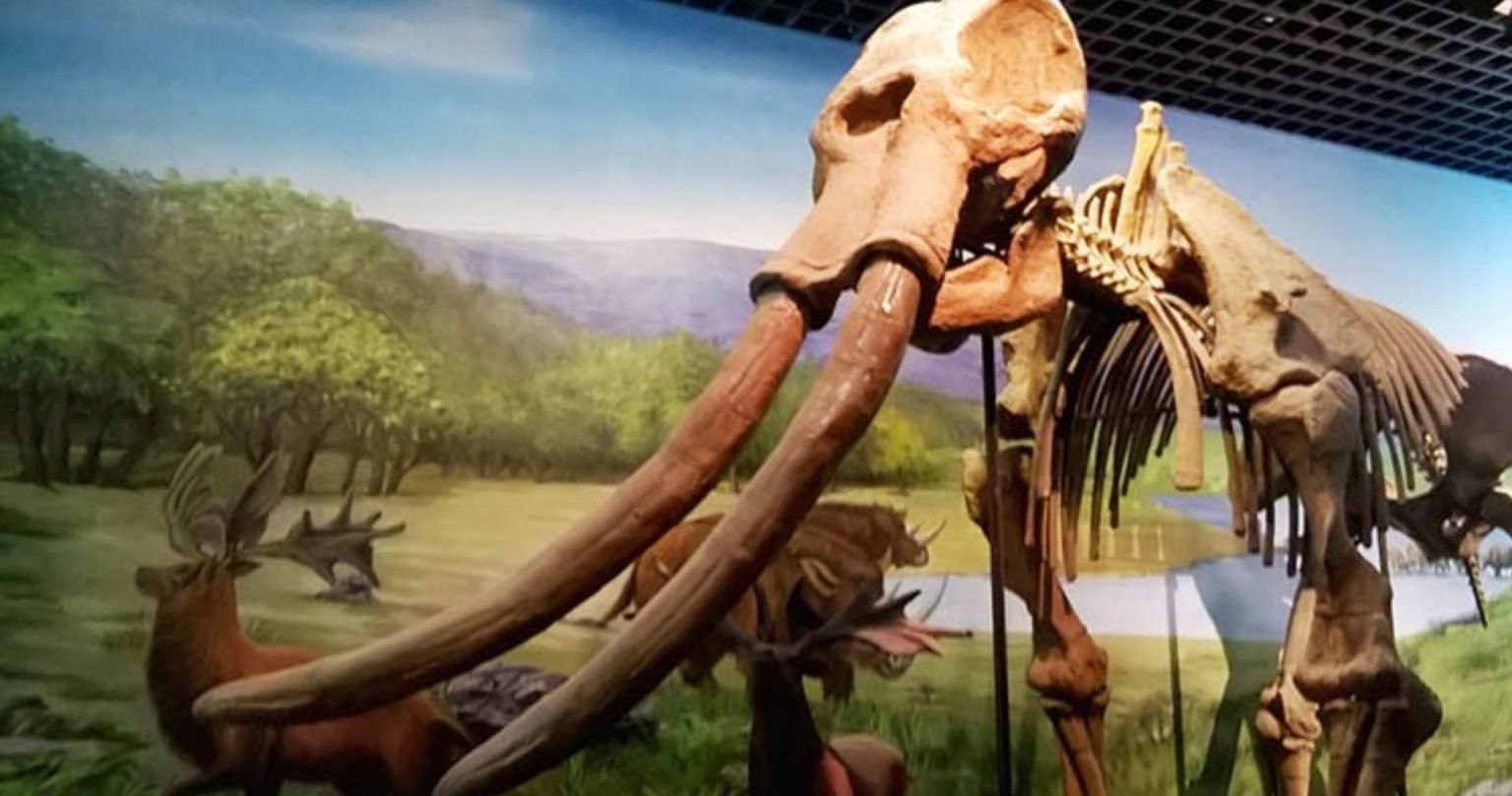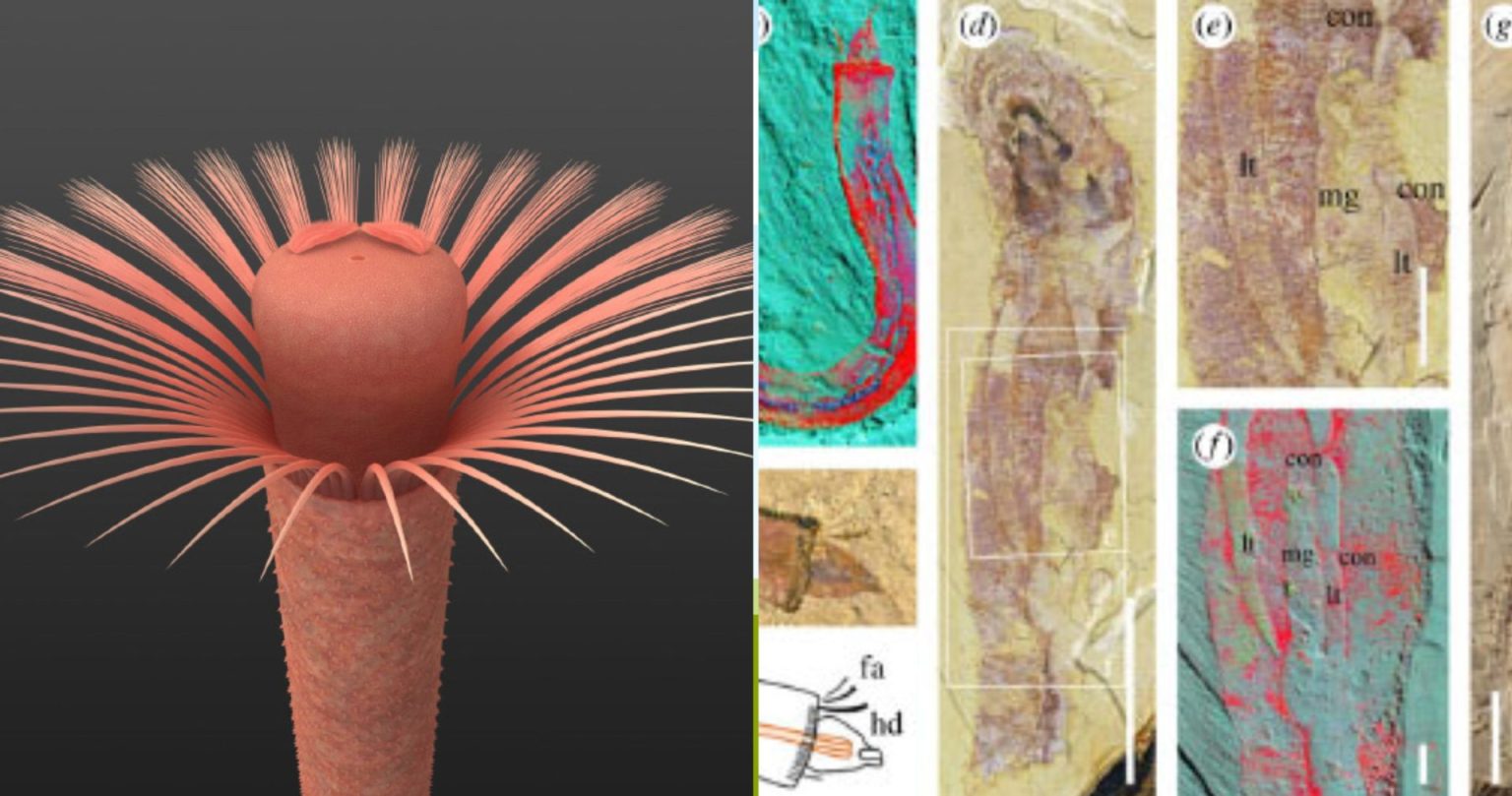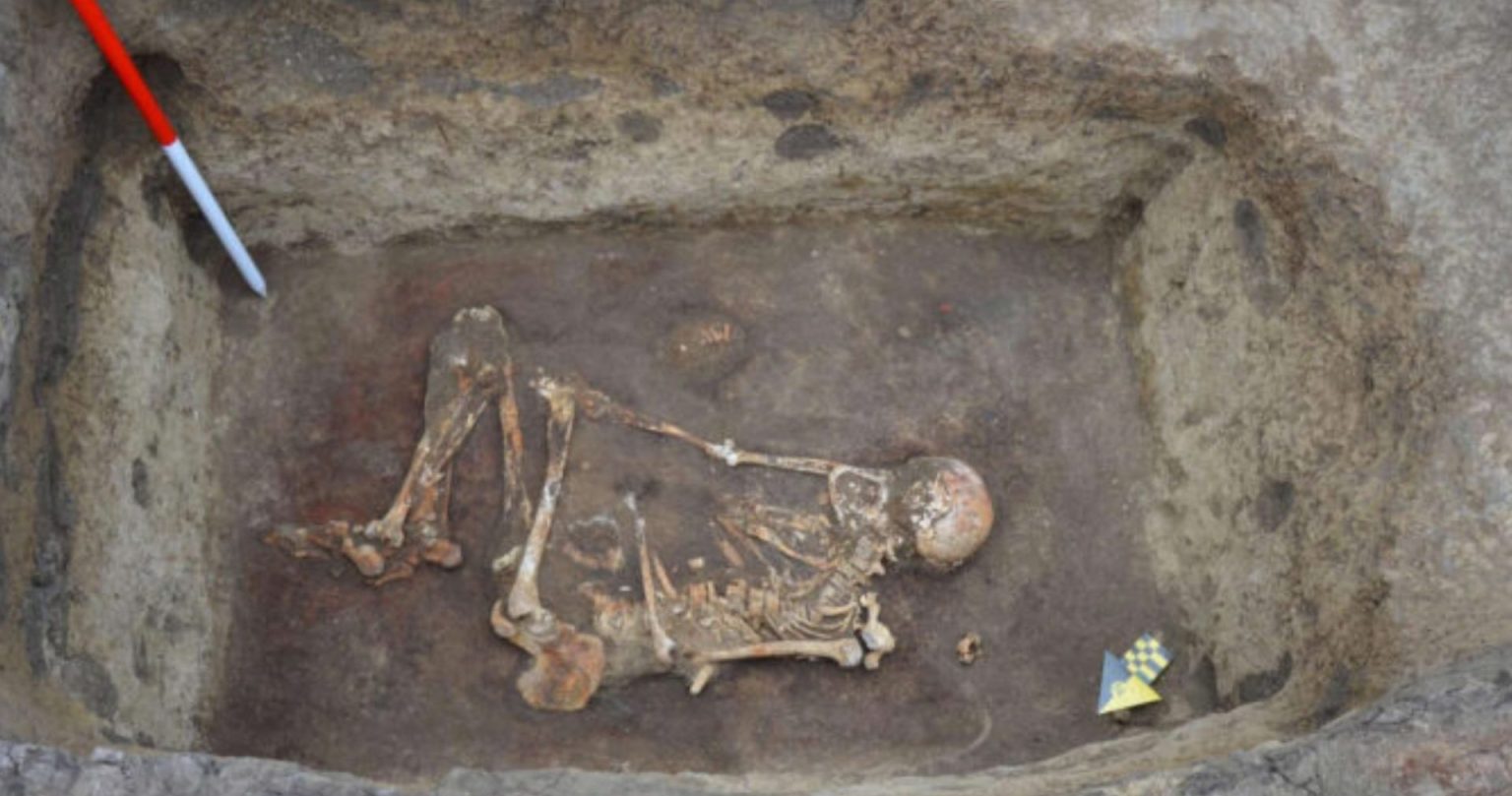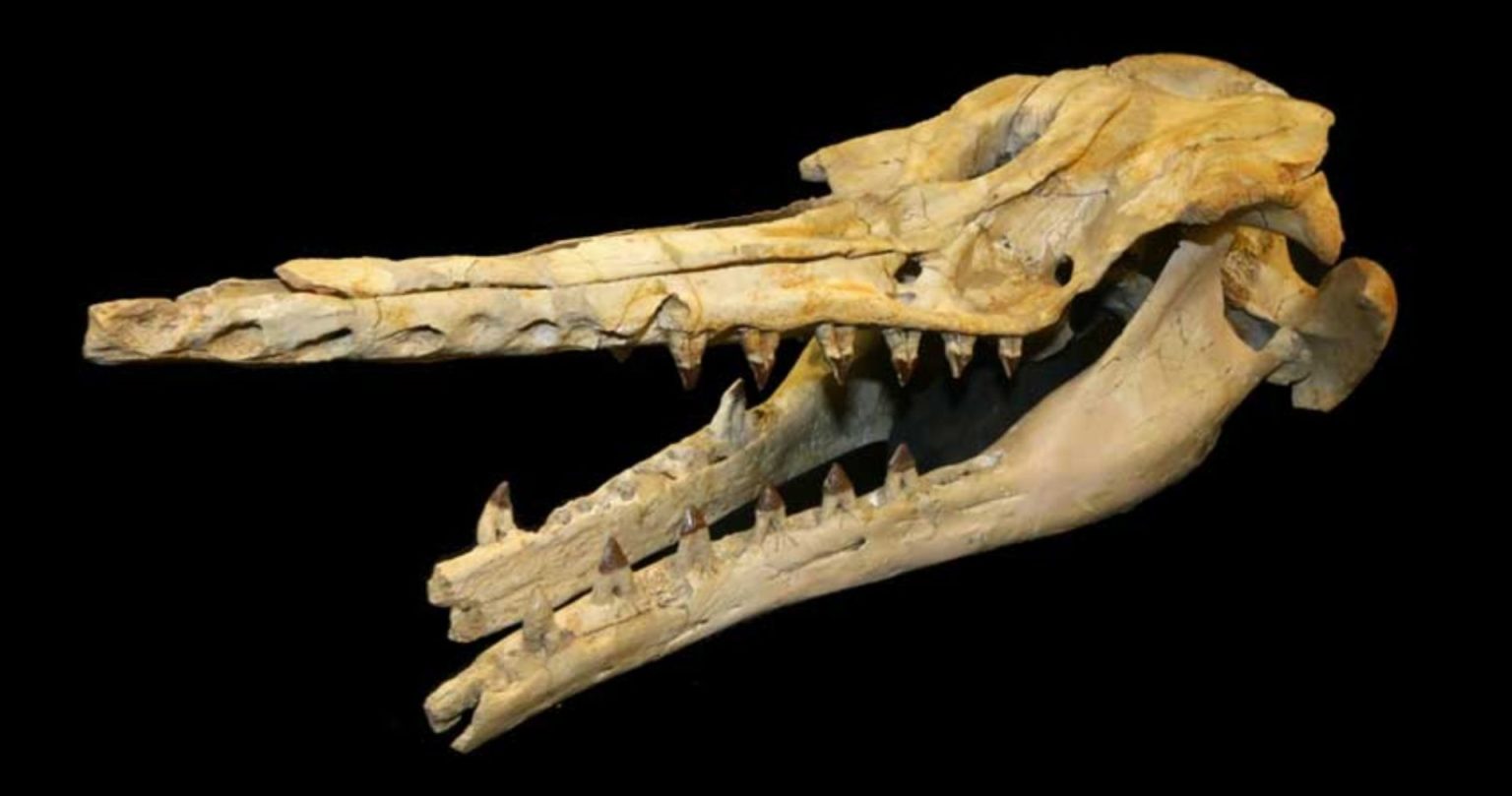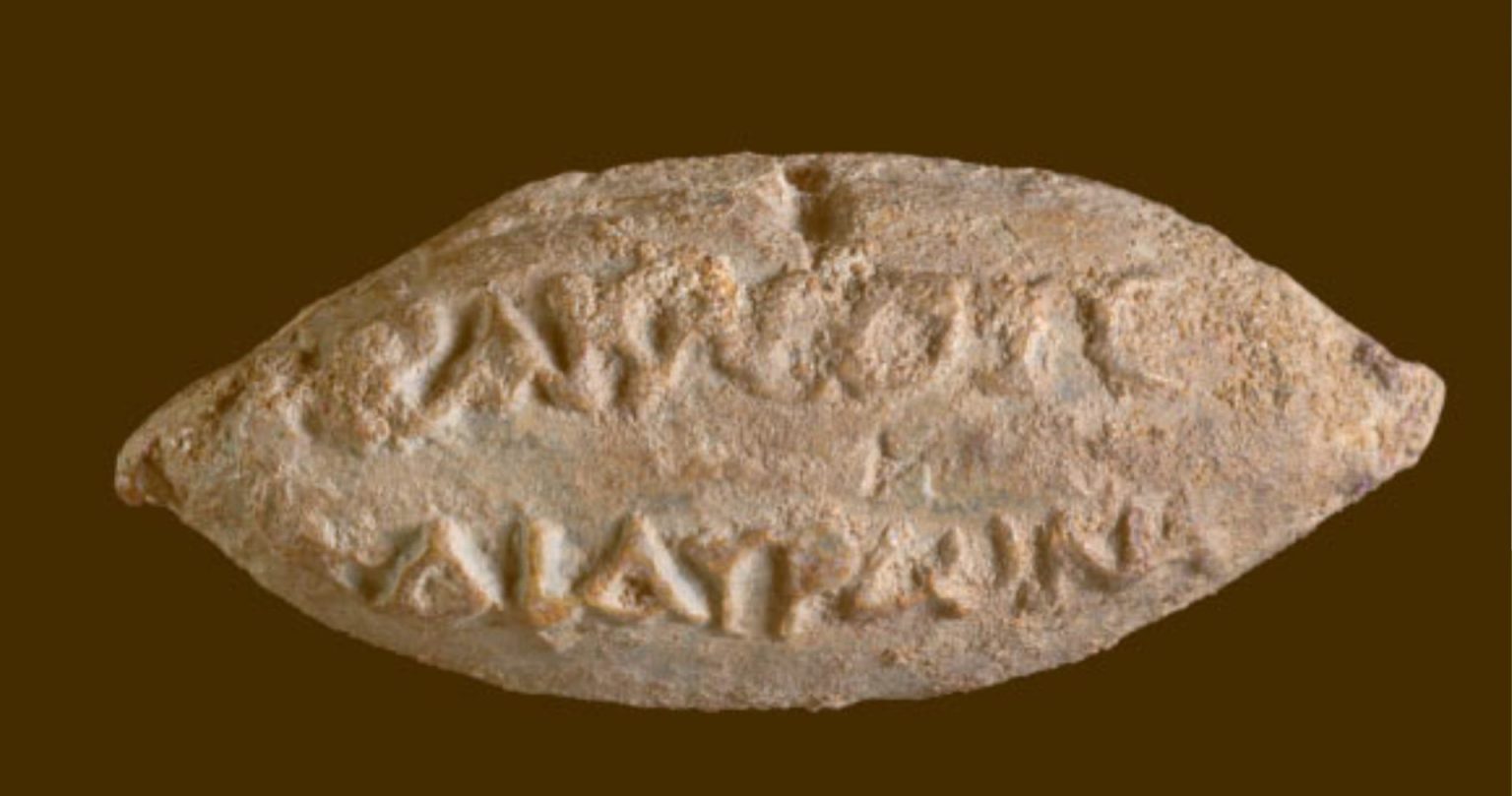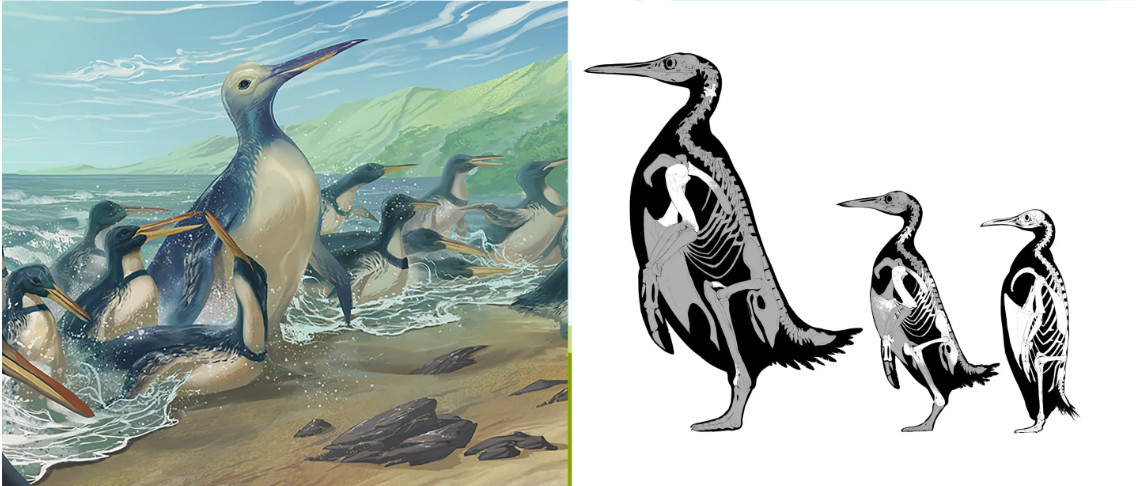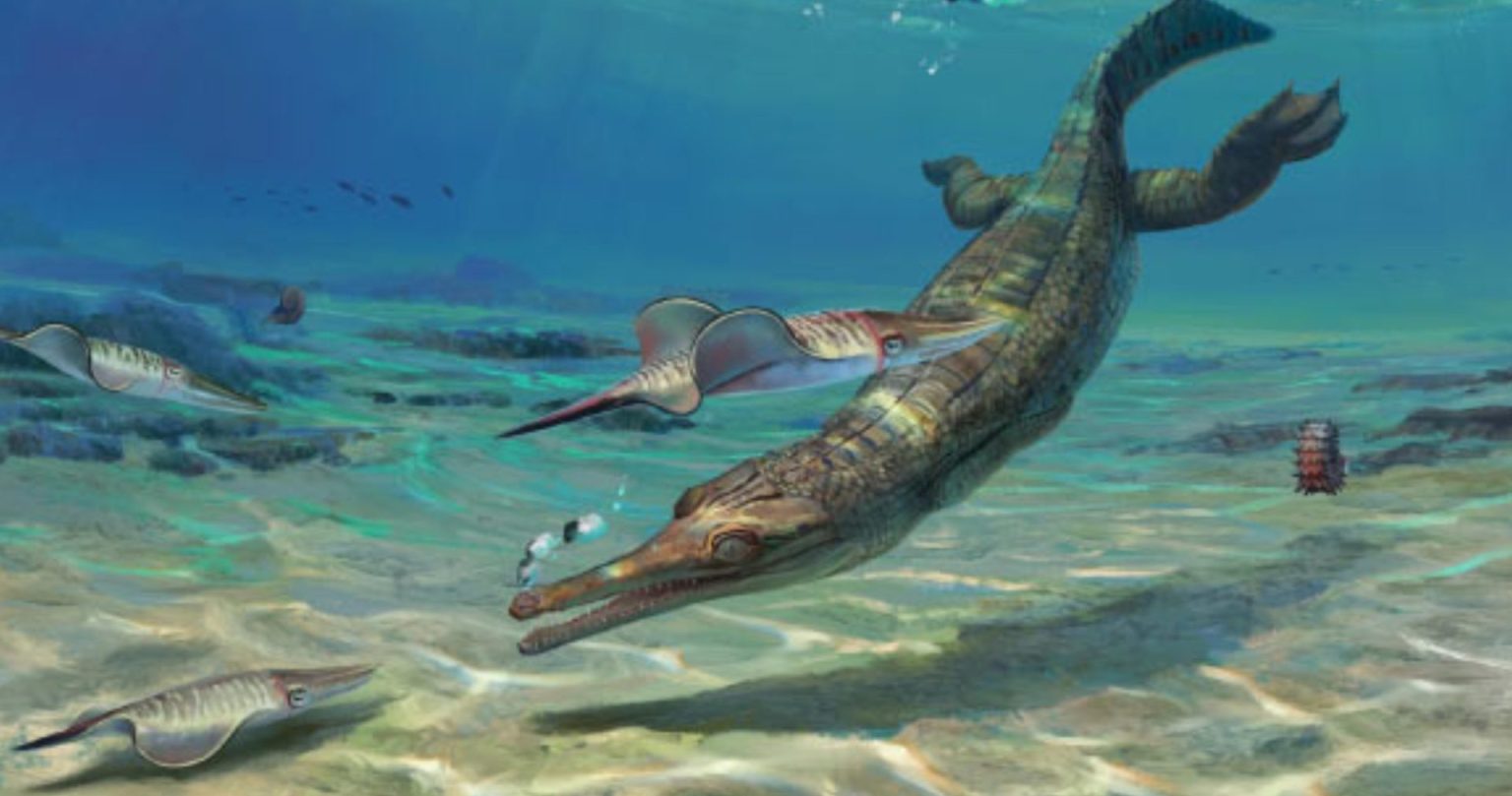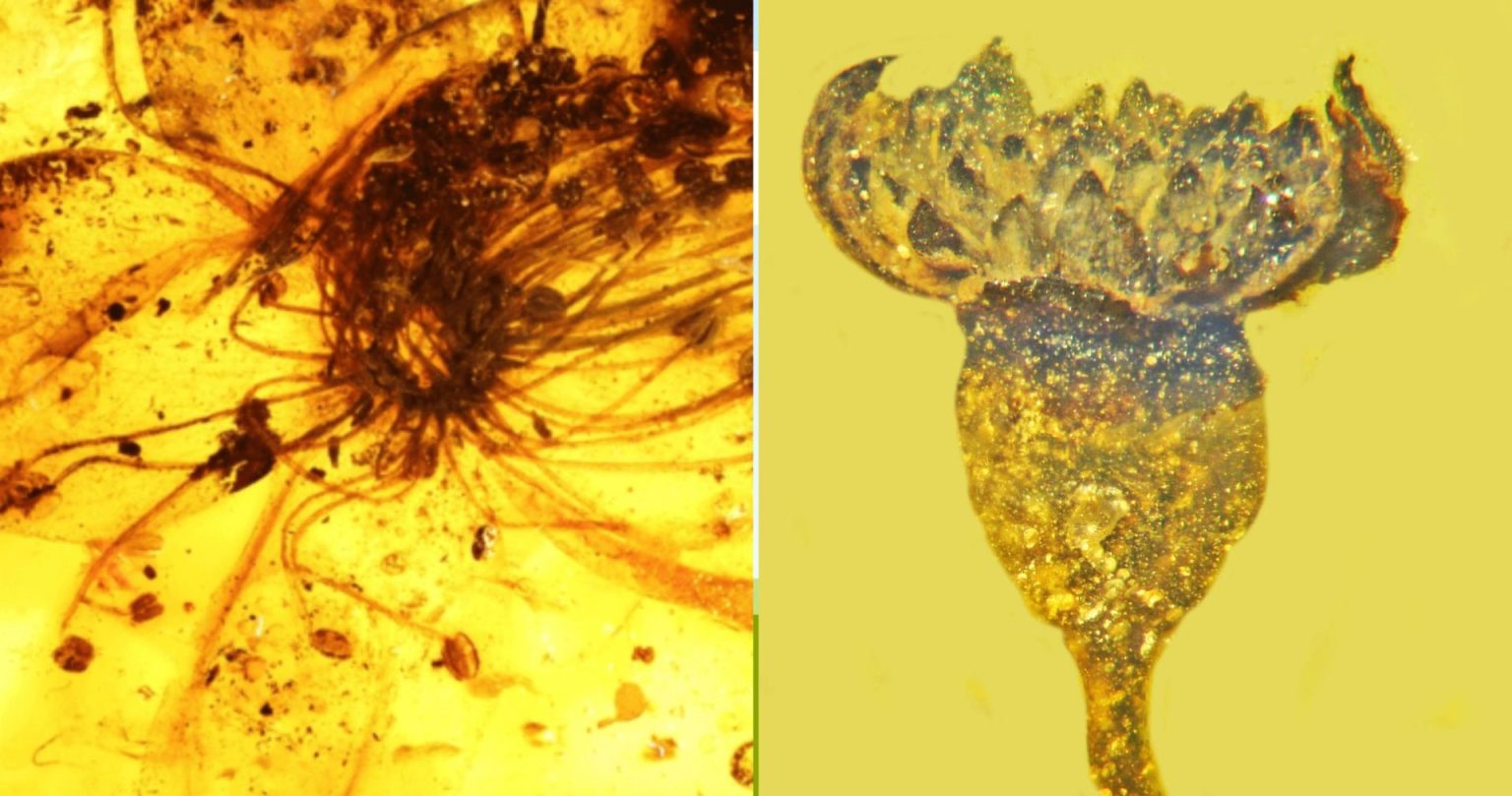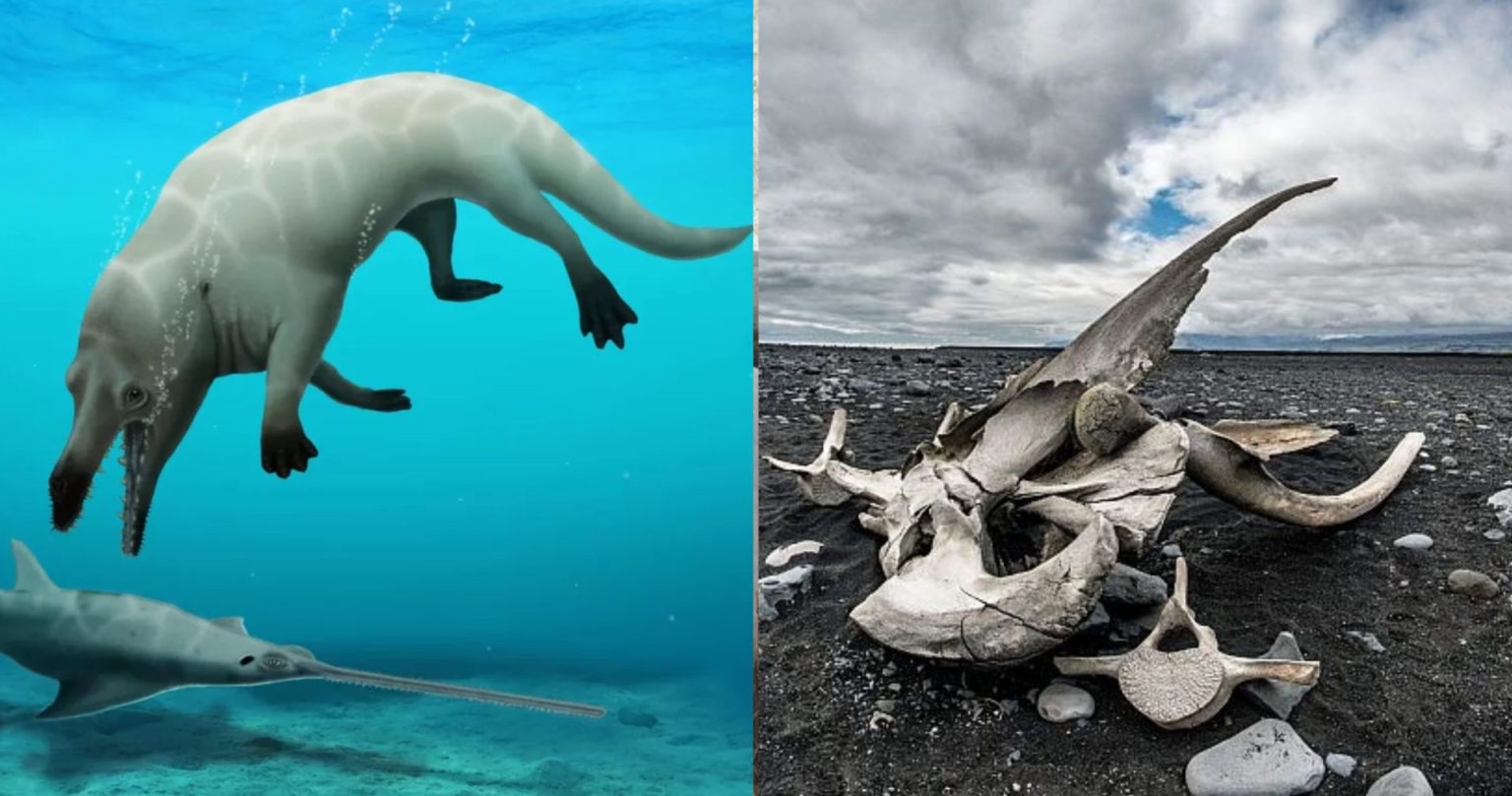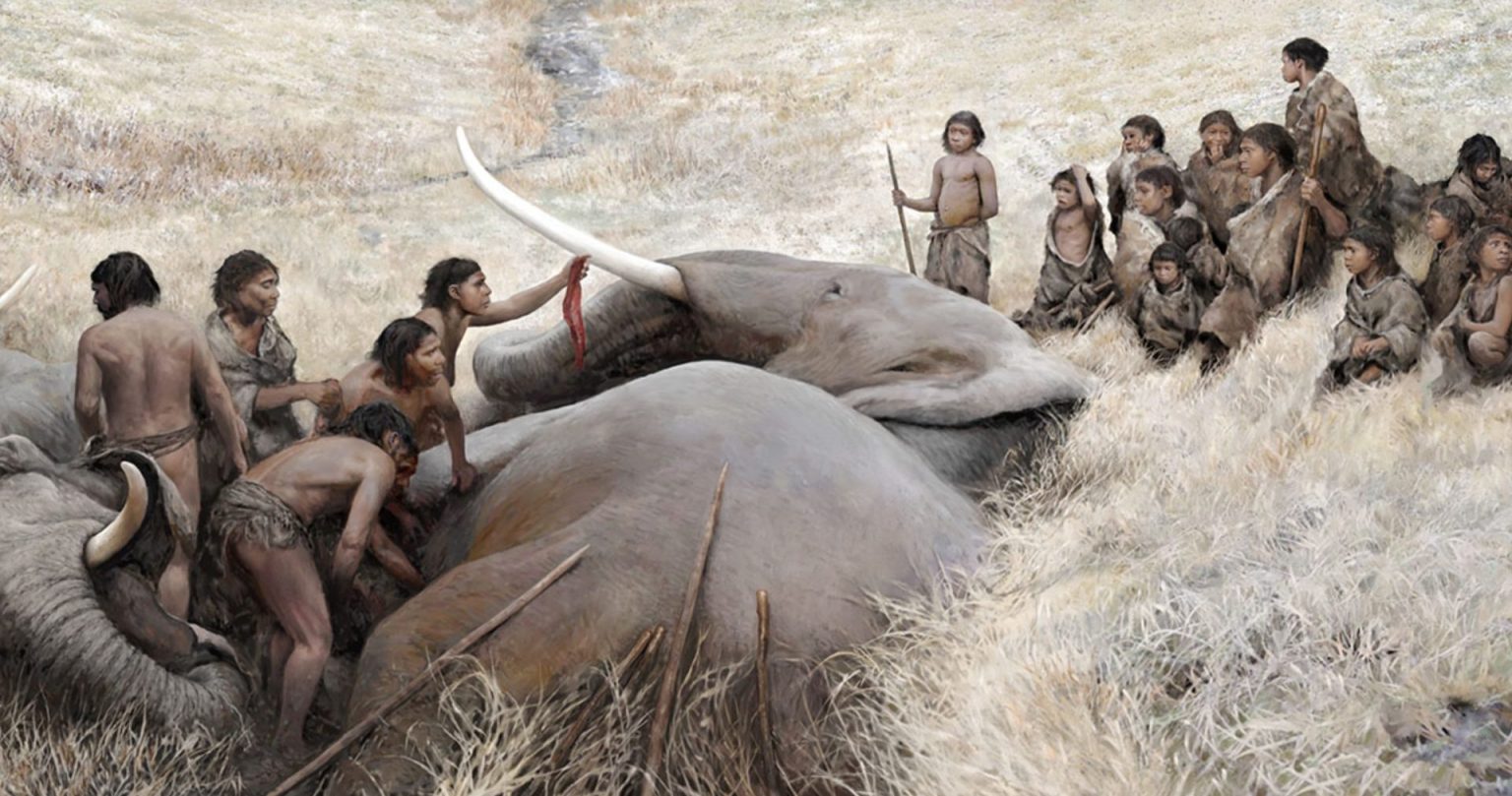The discovery of an unusual set of ceramic vessels has shed new light on the mummification process in ancient Egypt, according to a new study. Around 2,500 years old, the 31 jars were discovered in an embalming workshop in the famed necropolis of Saqqara, near Cairo. The study was published Wednesday in the journal Nature. Parts of the burial grounds sit above the surface, but a shaft stretches down to an embalming room and burial chamber underground, where the jars were discovered. An illustration of a priest during an embalming process in an underground chamber in Saqqara, Egypt. Chemical residue found in the jars allowed…
Author: s s
The remains of at least five Ice Age mammoths, including two adults, two juveniles, and one infant, have been discovered at a quarry near Swindon alongside stone tools made by Neanderthals, in what experts are calling Britain’s most significant Ice Age discovery in recent years. The excavations, which were led by archaeologists from DigVentures, unearthed astonishingly well-preserved evidence at the site, including delicate beetle wings and fragile freshwater snail shells, as well as stone tools and mammoth bones. Research is ongoing to understand why so many mammoths were found in one place, and whether they were hunted or scavenged by Neanderthals.…
A metal detectorist in Belgium discovered a piece of a mysterious bronze artifact known as a Roman dodecahedron, which is thought to be over 1,600 years old. Patrick Schuermans, a hobby archaeologist, was scanning the ground in Kortessem with a metal detector when he stumbled upon an unusual fragment, according to a news release from the Flanders Heritage Agency. Dodecahedrons are hollow 12-sided geometric shapes with small knobs at their corners and holes of varying diameters on each pentagonal face. They have perplexed researchers for centuries, owing to the fact that the polygonal object does not appear in Roman writings or drawings. Around…
Believe it or not, but once upon a time, in the area we now know as North America, there existed a forgotten continent which was inhabited by a cast of peculiar dinosaurs you’ve probably never heard of. In fact, the history of the lost world of Appalachia is basically missing. North America was once separated into two colossal islands bisected by the Western Interior Seaway stretching from the Gulf of Mexico to the Arctic Ocean. In the Late Cretaceous era, from approximately 100 to 66 million years ago, Appalachia stood as the eastern continent while the western landmass was known as Laramidia. We’ve all…
During excavations at Masada, archaeologists from the Israel Antiquities (IAA) uncovered a papyrus payslip dated to 72 BC belonging to a Roman soldier. Masada is a rugged crag in the Judean Desert overlooking the Dead Sea. Herod, the first-century BCE Judean king best known for constructing Jerusalem’s Temple Mount complex, built a fortress and palace on the mountain. Jewish rebels entrenched themselves at Masada a century later, from 66 to 74 CE, during the Jewish Revolt against Rome. A Roman army besieged the last holdouts nearly four years after the fall of Jerusalem. The only historical account of the conflict…
Archaeologists working on a site in southern Tamaulipas, Mexico, known as El Naranjo, have discovered tombs and ruins from Mesoamerica’s Classic period (250 AD to 900 AD). The remains include circular stone platforms, human burials, and precious ornaments that reveal more about the burial traditions and practices of the Huastec people. The large platforms are believed to have been built to protect the eternal resting places of significant individuals, and the ornamental objects found with the remains are thought to have been created with great care and skill. This latest discovery may reveal more information about the Huastec civilization’s history…
A study shows that the Egyptian mummy is adorned with 49 precious amulets, some in the shape of specific body parts. Ancient Egyptians went through a lot of linen when they wrapped up their lost loved ones. Winding long strips of the material around their torsos and their appendages — and sometimes around their individual fingers and toes — these wrappings were intended to protect and preserve the dead during their transition to the afterlife. But what was woven within and underneath these layers of linen? According to recent research in Frontiers in Medicine, the “digital unwrapping” of an approximately 2,300-year-old mummy solves this age-old secret.…
People work at the site after the announcement of the discovery of 4,300-year-old sealed tombs in Egypt’s Saqqara necropolis, in Giza, Egypt. Photo: Reuters CAIRO — Egyptologists have uncovered a Pharaonic tomb near the capital Cairo containing what may be the oldest and “most complete” mummy yet to be discovered in the country, the excavation team leader said on Thursday. The 4,300-year-old mummy was found at the bottom of a 15-metre shaft in a recently uncovered group of fifth and sixth dynasty tombs near the Step Pyramid at Saqqara, Zahi Hawass, director of the team, told reporters. An Egyptian archaeologist…
The Book of Revelation is filled with prophetic visions of apocalyptic events. But if the astonishing conclusions of a Biblical researcher from Johannes Gutenberg University Mainz (JGU) are correct, this text may have been doing more than just predicting future disasters. According to Dr. Michael Hölscher, a researcher from the JGU Faculty of Catholic Theology, the Book of Revelation is interspersed with language taken directly from Roman-era curse tablets , written scripts that were meant to bring harm or bad fortune on someone who had somehow cheated, exploited, threatened or wronged someone else. Rather than just predicting terrifying events, some of the…
The recovery of life from the devastating end-Permian mass extinction, which peaked about 252.3 million years ago, was an important period of evolution. Whether biodiversity had to rebuild from near annihilation or from refugia is a matter of conjecture but recovery heralded the development of recognizably modern ecosystems. Paleontologists have now discovered an exceptionally preserved fossil assemblage in the Daye Formation near Guiyang, China. Named Guiyang Biota, the assemblage is dated to 250.83 million years ago (nearly one million years after the extinction event) and presents examples of diverse fishes, ammonoids, bivalves, protists, and malacostracan arthropods. Field photo of the…
Straight-tusked elephants were some of the largest land mammals ever to have existed, but no one has been quite sure just how many of the now-extinct species existed throughout Africa, Europe and Asia during the last million years. By studying the shape of the skulls, researchers have reassessed the animals’ evolutionary history. The straight-tusked elephants, which belonged to the genus Palaeoloxodon, were a widespread group that lived during the Pleistocene (2.5 million to 11,700 years ago). But despite being well known from the fossil record, the exact number of species and their evolutionary relationships have remained something of a mystery. Steven…
Sometimes people just need to let their hair down. Whether you’re a despotic ruler seeking to distract from a major controversy or a downtrodden peasant looking to get away from the daily grind, nothing else distracts like a good party. It should come as no surprise that humans have been partying for thousands of years. Here’s a list of what people got up to at eight of history’s most legendary parties of all time. Representational image of a historic party, with musicians and dancers living it up on a fresco from the tomb of Nebamun. ( Public domain ) Legendary Party #1.…
The principal animal lineages diverged in the Cambrian period, but most diversity at lower taxonomic ranks arose more gradually over the subsequent 500 million years. Annelid worms, or segmented worms, seem to exemplify this pattern, based on molecular analyses and the fossil record. However, 15 new specimens of the annelid worm Iotuba chengjiangensis challenge this picture. Iotuba chengjiangensis. Image credit: Zhang et al., doi: 10.1098/rspb.2022.2014. The fossilized remains of this worm, also known as Eophoronis chengjiangensis, came from the Early Cambrian Chengjiang Lagerstätte in China. The specimens included evidence of the worms’ guts and kidneys and revealed they had an unexpectedly complex structure similar…
3,000-year-old human skeleton found in Romanian archaeological site A 3,000-year-old human skeleton was recently discovered at an archaeological excavation site in the village of Drăguşeni, Botoşani county. The skeleton dates back to the beginning of the Bronze Age and to the Yamnaya culture, and was identified after exploring a large tumulus in Drăguşeni, according to Adela Kovacs, the head of the archaeology section of the Botoşani County Museum. “The research in Drăguşeni focused on several periods and multiple sites. We carried out surface research in the area starting in 2018. During a field visit with colleagues from the Institute of…
Paleontologists have identified a new species of long-legged, filter-feeding pterodactyloid pterosaur from the well-preserved specimen found in a quarry in Germany. An artist’s impression of Balaenognathus maeuseri. Image credit: Megan Jacobs. Balaenognathus maeuseri lived in what is now Europe during the Upper Jurassic epoch, between 157 and 145 million years ago. The flying reptile belongs to Ctenochasmatidae, a family of pterosaurs known from the limestone in Bavaria, Germany. “This pterosaur had teeth in the upper and lower jaw, which are a mirror image of each other. There are at least 480 teeth in total,” said University of Portsmouth’s Professor David Martill. “There is one…
A family of three made a whale of a discovery while exploring the Chesapeake Bay in Maryland. Cody Goddard and his wife and son were searching for sharks’ teeth when they came upon a 12-million-year-old whale skull that weighed 650 pounds and measured more than five feet long. The fossil was discovered in October, but it took researchers at the Calvert Marine Museum two months to pull it from the ground due to its massive size. Stephen Godfrey, curator of paleontology at the museum, said the discovery felt like they had ‘won the World Cup of Paleontology.’ While Godfrey and his team…
The ancient sling bullet, dated to the Hellenistic period, bears a magic inscription in Greek: ‘Victory of Heracles and Hauronas.’ The 2,200-year-old lead sling bullet from Yavne, Israel. Image credit: Israel Antiquities Authority. The 2,200-year-old sling bullet was unearthed by archaeologists from the Israel Antiquities Authority and the Ben Gurion University of the Negev in Yavne, a city in the Central District of Israel. The 4.4-cm-long artifact was made of lead and likely belonged to a Greek soldier. “The inscriptions were part of psychological warfare, the main purpose of which was to terrorize the opponent, and in addition, to unite the…
Fossils found in New Zealand highlight an era after the dinosaurs when giant flightless birds prowled the seas for prey. An artist’s concept of Kumimanu and Petradyptes penguins on an ancient New Zealand beach. The larger of the two weighed almost 350 pounds and is the heaviest penguin known to science.Credit…Simone Giovanardi New Zealand has been a haven for earthbound birds for eons. The absence of terrestrial predators allowed flightless parrots, kiwis and moas to thrive. Now researchers are adding two prehistoric penguins to this grounded aviary. One species is a beefy behemoth that waddled along the New Zealand coastline nearly 60 million years ago.…
Turnersuchus hingleyae, a new genus and species of thalattosuchian crocodylomorph from the Early Jurassic epoch, helps fill a gap in the fossil record and suggests that thalattosuchians, with other crocodyliforms, should have originated around the end of the Triassic period — around 15 million years further back in time than when Turnersuchus hingleyae lived. Life reconstruction of Turnersuchus hingleyae. Image credit: Júlia d’Oliveira. Thalattosuchians, referred to colloquially as ‘marine crocodiles’ or ‘sea crocodiles,’ were prominent members of marine ecosystems from the Early Jurassic through the Early Cretaceous epoch. They appear abruptly in the fossil record with high species richness, suggesting rapid diversification during…
The largest-known fossilized flower encased in amber, dating back nearly 40 million years, was again discovered in the Baltic region of Northern Europe. Researchers have reexamined the rare amber fossil, which was first identified as the property of a pharmacist by the name of Kowalewski in what is now the Russian city of Kaliningrad in 1872. According to Eva-Maria Sadowski, a postdoctoral researcher at Berlin’s Museum für Naturkunde and author of the new study, the striking fossil had been languishing largely forgotten in the collection of the Federal Institute for Geosciences and Natural Resources (BGR). This tawny blossom, which looks…
The Hittites were one of the great powers in the ancient world across almost five centuries, between 1650 and 1200 BCE, with an empire centered in Anatolia — a region that includes much of modern Turkey — with political and socioeconomic interconnections throughout the ancient Near East and Eastern Mediterranean. In new research, scientists analyzed ring width and stable isotope records from ancient juniper trees recovered from archaeological excavations at the site of Gordion in central Anatolia, about 230 km west of the Hittite capital Hattusa. They identified an unusually severe continuous dry period from around 1198 to 1196 BCE. The Lion Gate…
Scientists discover 43 million-year-old fossil of a four-legged whale Scientists have discovered the 43 million-year-old fossil of a previously unknown four-legged whale species, which helps trace the transition of whales from land to sea. The newly discovered amphibious whale was found in Egypt and belongs to the Protocetidae, a group of extinct whales that falls in the middle of that transition, say the team of researchers. Its fossil was unearthed from the middle Eocene rocks in Egypt’s Western Desert – an area once covered by sea that has provided an array of discoveries showing the evolution of whales. It was…
Straight-tusked elephants (Palaeoloxodon antiquus) were the largest terrestrial mammals of the Pleistocene epoch, present in Europe and western Asia between 800,000 and 100,000 years ago. A new analysis of 125,000-year-old bones of straight-tusked elephants from ancient lake deposits in Germany shows that hunting of these enormous animals was part of the cultural repertoire of Neanderthals there, over 2,000 years, many dozens of generations. Professor Gaudzinski-Windheuser standing next to a life-size reconstruction of an adult male European straight-tusked elephant (Palaeoloxodon antiquus) in the State Museum of Prehistory in Halle, Germany. Straight-tusked elephants are among the most powerful proboscideans (elephants and their…
Throughout its very long history, ancient Egypt’s fate has always been decided by the great ruling dynasties. A powerful state and empire needs an equally powerful ruler, and ever since the unification of Lower and Upper Egypt and the establishment of the First Dynasty around 3000 BC, this ancient empire usually had a steady guiding hand at its helm. When it did not, it descended into chaos and vulnerability. This practice of powerful ruling lineages continued for thousands of years. One of the most powerful dynasties that stands out in Egypt’s history is the Nineteenth Dynasty, also known as the…




